Economic
European Union Plans $2 Trillion Coronavirus Response Effort
The European Union set out a $2 trillion coronavirus response plan, including a massive pooling of national financial resources that, if approved, would deepen the bloc’s economic union in a way that even the Eurozone debt crisis failed to achieve. May 27’s proposal composed of a €750 billion ($824 billion) recovery plan and €1.1 trillion budget over the next seven years, aims to lift the region from its economic slump, but must overcome infighting dividing the bloc. If backed by all 27 member states, the plan would represent a historic step in knitting together national finances across the bloc. “This is Europe’s moment,” said European Commission President Ursula von der Leyen. “Our willingness to act must live up to the challenges we are all facing.” German Finance Minister Olaf Scholz recently compared the proposed assumption of debts across EU borders to Alexander Hamilton’s move in 1790 for the new U.S. government to assume states’ debts from the Revolutionary War. The EU aims to provide a massive fiscal injection for the bloc’s hardest-hit countries without increasing the already soaring debt levels of southern nations including Italy, Spain and Greece. “Negotiations will take time,” a Dutch diplomat said. “It’s difficult to imagine this proposal will be the end-state of those negotiations.”
Federal Reserve report on US business conditions finds evidence of a continued labour-market slide, lower consumer spending
U.S. businesses saw limited evidence of a recovery in recent weeks, with economic activity continuing to decline amid the coronavirus pandemic, the Federal Reserve said on May 27. The labour market continued to deteriorate and consumer spending fell further as retailers and restaurants remained largely closed in most of the country through mid-May, the Fed said in its periodic report of anecdotes from businesses around the country known as the “beige book.” The latest edition of the beige book contains information through May 18, some two months after nonessential businesses around the country shut down to help contain the spread of the novel coronavirus. Leisure and hospitality continued to see the most severe effects of efforts to contain the pandemic. The Fed’s contacts in commercial real estate, meanwhile, reported that large numbers of retail tenants had deferred or missed rent payments.Despite higher prices for some groceries such as meat and fresh fruit, the Fed said, pricing pressures were “steady to down modestly on balance.” Still, there were a few signs of a nascent recovery in some areas. In the New York Fed’s district, which includes the virus’s U.S. epicentre, business contacts tended to be less pessimistic than in the prior report about the near-term outlook.
Rules, not lawsuits, are the way to make workplaces Covid-safe
All countries, even those without a culture of litigation, face a similar conundrum. They need to restart economies to limit the long-term damage, while ensuring employers face incentives and controls to minimise risks to workers. There is a powerful moral dimension here, too. Many who must go back to physical workplaces are lower-income employees, often those without insurance or sick pay rights. Even in the US, lawsuits face a relatively high bar. Civil plaintiffs must show on a preponderance of the evidence that an employer was responsible for their illness, and that this resulted from negligence. Except where there are clusters of cases or an employer’s egregious behaviour is plain, showing this may be challenging. But the mere risk of being embroiled in long, expensive lawsuits may be enough to keep businesses closed.Wherever possible, effective regulation is preferable to litigation. Central and local governments and appropriate regulators need to set clear, sector-by-sector guidelines on what employers must do to ensure Covid-19 safety — ranging from how to enforce social distancing to what, if any, protective equipment they should provide. Rules must be credible and drawn up by bodies independent of employers and employees.
Taiwan tech companies' China exit fuels $25bn investment drive
Since January 2019, 189 companies have applied for government incentives to invest over NT$761.4 billion in Taiwan, filings as of May 21 show. Most of the money has gone into the high-tech sector. Taiwanese manufacturers began shifting production to the mainland in the 1990s, a step ahead of Japanese, U.S. and European rivals, to take advantage of China's lower wages. Contract manufacturers like Foxconn and Quanta were a force behind this trend, which played a major role in turning China into a manufacturing powerhouse. But now, Taiwanese authorities have played a major role in drawing Taiwanese companies back to the island. President Tsai Ing-wen, eager to reduce Taiwan's economic dependence on the mainland, introduced new investment incentives in January 2019. The package includes eased restrictions on foreign labour and help paying interest on private-sector loans. Companies need only fulfil certain requirements, such as having invested on the mainland for two or more years, or be suffering from trade tensions between the U.S. and China. About NT$700 billion was committed in 2019, five times as much as was approved for investment in mainland China for the year. Meanwhile, Taiwanese investment flows to the mainland halved in 2019.
With Vast Data, Can Beijing Direct A Planned Economy?
China is wrestling with its economic identity. Its ideological roots and legitimacy stem from its asserted commitment to communism at the same time as it acknowledges the effectiveness of price discovery in a market economy. The result can be a system pulling in two directions at once. Its DNA leads the Chinese Communist Party to favour state-owned enterprises over private ones. It has never fully trusted its entrepreneurs even as it has to acknowledge their greater efficiency and role in job creation. Moreover, the party will never compromise its control in the interests of untrammelled economic freedom, seeing that as the beginning of a process that leads inevitably to demands for political freedom. Thanks to technology, Chinese bureaucrats have more access to granular data than any government has ever had before. Moreover, they also have access to the data of the country's awesome consumer tech companies as so much economic activity moves online. And as the People's Bank of China gradually introduces a digital yuan, it will have even more data about its people's spending habits. Indeed, it is conceivable that in a post-COVID world, there will be ways in which China combines elements of central planning and market efficiencies.
Beijing-Washington rift helps Moscow make case for Power of Siberia sequel
China and Russia have been in talks over Power of Siberia-2 for years. Gazprom initially envisioned building the pipeline across the Altai Mountains to connect gas fields in Western Siberia with China's Xinjiang Province, but this proposal encountered scepticism from Beijing. To revive the negotiations, the Russian gas monopoly proposed a new route at the end of last year, one that would instead pass through Mongolia and deliver gas directly to densely populated areas in central China. This would be a sequel to the Power of Siberia-1 pipeline, launched in December. Under a $400 billion agreement inked in 2014, Gazprom committed to supplying China with up to 38 billion cu. meters of gas annually for 30 years.Gazprom has begun design and exploration work on Power of Siberia-2, a new mega-pipeline that would deliver up to 50 billion cu. meters of natural gas annually to China, the Russian state energy conglomerate revealed last week. The pipeline, if built, would more than double Russia's gas exports to its neighbour. The supply line is not expected to come onstream before 2030, and even that is assuming the two sides sign a contract in the near future.
Singapore’s financial position will be weaker in coming years, but Govt will manage the situation, says DPM Heng
Singapore's financial position will be "a lot weaker in the coming years", but the Government will continue to find ways to manage this "difficult financial situation", said Deputy Prime Minister Heng Swee Keat in an interview on May 27. A total of S$52 billion will be drawn from past reserves this financial year to help Singapore as it battles the economic fallout from the COVID-19 pandemic. Mr Heng, who is also Finance Minister, announced that the Government would draw S$31 billion from past reserves to fund the Fortitude Budget, worth S$33 billion. The financial crisis was the only other time that Singapore had dipped into its reserves, when the Government drew S$4.9 billion to help workers stay employed and companies get credit. The money was returned to the reserves in 2011 after the economy recovered.
Japan aims to revive virus-hit tourism industry by footing bill
The Japanese government is looking to revive the tourism industry, a key driver of the economy that has been battered by the novel coronavirus pandemic, by paying for people to go on vacation in the country. Under its Go To Travel initiative, the government will provide subsidies worth up to 20,000 yen ($185) per day for people going on leisure trips. The subsidies will cover half the cost of trips, distributed through a combination of steep discounts and vouchers to be used at nearby restaurants and shops. The initiative is expected to begin as early as late July, applying to bookings made through Japanese travel agencies or directly with hotels or "ryokan" traditional Japanese inns, though the cost of traveling to Japan will not be covered in any part. The government is eager to jump-start the world's third-largest economy, which was already flagging following a consumption tax hike last year before the coronavirus and emergency brought business activity to a halt. The tourism industry has been among the hardest hit as many Japanese have stopped going to the office, much less on vacation.
Strategic
Donald Trump offers to mediate in India-China border dispute
US president Donald Trump has offered to mediate in a “now raging border dispute” between China and India, amid a sharp rise in tensions between the two giant Asian neighbours in the remote Himalayas. “We have informed both India and China that the United States is ready, willing and able to mediate or arbitrate their now raging border dispute,” Mr Trump tweeted early May 27. In early May, border patrols from the two countries confronted each other along the banks of Ladakh’s Pangong Lake, a site where there have been previous confrontations. A few days later, Indian and Chinese patrols engaged in a serious brawl at Naku La in Sikkim, a violent clash that left several troops from both sides injured. Since then, both sides have reinforced their troop strength at four separate spots. In recent years, India has worked hard to develop new roads and logistical infrastructure on its side of the disputed boundary, in an effort to put them on a par with China’s own highly developed border infrastructure. But Indian analysts believe China has been irked by New Delhi’s initiatives to reinforce its position.
Gazprom calls Washington’s bluff on Nord Stream 2 sanctions
When the US imposed sanctions in December banning external contractors from working on Russia’s Nord Stream 2 gas pipeline to Germany, Washington hoped it had finally killed the controversial project stone dead. It was wrong. Gazprom, the Kremlin-controlled gas giant behind the project, called Washington’s bluff. Not only does Gazprom supply almost 40 per cent of Europe’s gas, it has also raised €4.75bn to pay for Nord Stream 2 from European energy companies Shell, Engie, OMW, Uniper and Wintershall. Gazprom now says it will bridge that gap — in Danish territorial waters — alone and get the pipeline ready to start operations in spring 2021. New sanctions at this stage would mark a significant escalation in the six-year sanctions campaign against Moscow. The US has long resisted similar sanctions against Rosneft, Gazprom’s oil-producing equivalent, fearing the knock-on impact on the global crude market. The EU and Germany have condemned Washington’s December sanctions as an unfair imposition on the bloc’s energy policy, and would be thrown into crisis by any moves to level sanctions against its most important gas supplier. Gazprom now appears to be gambling on its belief that the US would not go that far.
China brands Canada ‘accomplice’ of US, as Huawei’s MengWanzhou loses bid to have extradition case thrown out
China has accused Canada of acting as an “accomplice” to the United States in a “grave political incident”, after a judge in Vancouver rejected a bid by Huawei executive Meng Wanzhou to have her US extradition case thrown out. Justice Heather Holmes of British Columbia’s Supreme Court ruled on May 27 that the US fraud charges against Meng satisfied the Canadian extradition requirement of “double criminality”, which demands that suspects be accused of something that would constitute a crime in Canada as well as in the requesting country. The extradition case – which has thrown China’s relations with Canada and the US into turmoil – will therefore continue. In a statement on social media, China’s embassy said: “China hereby expresses strong dissatisfaction and firm opposition to this decision, and has made serious representations with Canada. “The United States and Canada, by abusing their bilateral extradition treaty and arbitrarily taking forceful measures against Ms Meng Wanzhou, gravely violated the lawful rights and interests of the said Chinese citizen,” the statement said.
What to expect now US deems Hong Kong no longer autonomous
US President Donald Trump has to decide what actions to take after the US state department told Congress on May 27 that Hong Kong was no longer considered autonomous from China, an assessment that could threaten the city’s long-standing special trading status. “A lot of” options were being considered, including personnel and sanctions “as determined in the United States-Hong Kong Policy Act of 1992 and in the Hong Kong Human Rights and Democracy Act [of 2019],” David Stilwell, assistant secretary of the Bureau of East Asian and Pacific Affairs at the state department said. Under the Hong Kong Human Rights and Democracy Act passed by the US Congress in November, the administration must decide every year whether governance of Hong Kong is suitably distinct from China, which is the prerequisite for the special status to continue. A revocation of Hong Kong’s special trading status with the US will put an end to the preferential economic and trade treatment the city has enjoyed and which has, at least partly, contributed to making it the financial and business hub in the region.
Huawei builds up 2-year reserve of 'most important' US chips
Huawei Technologies has stockpiled up to two years' worth of crucial American chips to shield its operations from Washington's crackdowns, sources told the Nikkei Asian Review. Huawei's stockpiling efforts focus on central processors made by Intel for use in servers and programmable chips from its peer Xilinx, the sources said. These are the "most essential components" for the company's base station business and emerging cloud business, and it has enough inventory to last between one and a half and two years, they added. The company started buying up chips at the end of 2018, soon after Huawei CFO Meng Wanzhou -- who is also founder Ren Zhengfei's daughter -- was arrested on the Canadian border, the sources said. Huawei revealed last week that it spent 167.4 billion yuan ($23.45 billion) stockpiling chips, components and materials in 2019, up 73% from the previous year. The company's first public confirmation of such efforts came three days after Washington further tightened export control rules to block any non-U.S. suppliers from producing chips to Huawei's own designs.
Taiwan readies for influx from Hong Kong ahead of China crackdown
Taiwan President Tsai Ing-wen said on May 27 her government will form a task force to deal with a possible influx of people from Hong Kong amid plans by China to impose a sweeping national security law in the territory. Tsai said the task force will examine and integrate all government resources to carry out an "action plan for providing humanitarian assistance" to people of Hong Kong wishing to relocate to the island. "We hope to roll out details of the plan shortly," she told reporters. Government data show that the number of Hong Kong people residing in Taiwan grew by 41 percent in a year to reach 5,858 last year. Tsai said as she expects the trend to continue, it is necessary to form the task force to deal with the matter properly. However, she stopped short of promising to enact a new refugee law, saying the Laws and Regulations Regarding Hong Kong and Macao Affairs would remain sufficient. "One certain thing is that our determination to take care of the people of Hong Kong remains unchanged," Tsai said.
Border closures & pre-travel tests are ‘of little use’ against Covid-19 spread, EU health agency says
The European Union’s public health agency has said border closures do little to prevent the spread of Covid-19, as the bloc’s states consider lifting some travel restrictions. The European Center for Disease Prevention and Control (ECDC) believes measures such as testing travellers before departure or temperature screening on arrival are also largely ineffective. The ECDC said in a report released late on May 26 that border closures had very negative effects on the economy and were effective only in delaying an epidemic at its beginning and in isolated regions. The report also said epidemiological data may not be reliable since European countries do not use a common approach to testing and case reporting, making it impossible to compare the spread of the epidemic.
Trump Draft Order Could Seek to Limit Protections for Social-Media Companies
A draft of an executive order President Trump is expected to sign on May 28 would seek to limit the broad legal protection that federal law currently provides social-media and other online platforms, according to people familiar with the draft. The draft order would make it easier for federal regulators to hold companies such as Twitter and Facebook liable for curbing users’ speech, for example by suspending their accounts or deleting their posts, the people said. The draft isn’t yet completed and is subject to change, the people said. It comes after Twitter on Tuesday moved for the first time to apply a fact-checking notice to tweets by the president on the subject of voter fraud. Mr. Trump on Tuesday accused the company of stifling free speech and vowed to take action. The executive order would mark the Trump administration’s most aggressive effort to take action against social-media companies, which the president has threatened to do for years. The order would also likely be challenged in court, experts said. The White House declined to comment.
Tanker cross Russian Arctic route without icebreaker assistance
The sea ice along the Russian Arctic coast is quickly vanishing as temperatures in the region have been reaching record highs. With the retreating ice comes tanker traffic. It was the “Christophe de Margerie” that on the 19th May kick started this year’s shipping season across the eastern part of the Northern Sea Route. The vessel owned and operated by Russian shipping company Sovcomflot loaded up liquefied natural gas in Sabetta and is due to arrive in the Chinese port of Jingtang on the 11th June. It was the earliest east-bound shipment on the route ever for this kind of vessel. By 27th May, the ship had made it almost to the island of Wrangle, information from ship tracker service Marine Traffic shows. The “Christophe de Margerie” is accompanied by nuclear powered icebreaker “Yamal”. In the wake of the almost 300 meter long vessel now follows the “Vladimir Voronin”, a vessel that is operated by company Teekay. The “Vladimir Voronin” on the 25th May left Sabetta and was on May 27th located in the Vilkitsky Strait north of the Taymyr Peninsula. The “Vladimir Voronin” is not accompanied by icebreaker. The “50 Let Pobedy” that escorted the ship out of Sabetta and eastwards towards the Vilkitsky Strait has now returned and appears to be on its way back to Sabetta.
Medical
Merck Pill that aims to force virus to mutate to self-destruction set for extensive clinical trials in US and UK
The new Merck drug completed its first safety trial in about 100 human volunteers in the UK and is set to begin extensive clinical testing in the US and UK early in June. Merck, the giant US drug group, said this week that it would develop the drug in collaboration with Ridgeback Biotherapeutics, a small Florida company that had licensed rights to the drug from its discoverers at Emory University in Atlanta. EIDD-2801 resembles the chemicals with which replicating viruses build their genes. “When the virus incorporates molecules from the drug into its RNA, there is a lethal accumulation of mistakes — an error catastrophe,” said Prof Ralph Baric, a coronavirus expert at the University of North Carolina who has been working for several years with colleagues at Emory to develop EIDD-2801. It is in the same class of drug as Gilead Sciences’ remdesivir, the antiviral that has so far shown most promise for treating Covid-19 patients in trials, but they work in a different way, said Roger Perlmutter, Merck’s head of research. “Remdesivir blocks an enzyme that the virus needs to replicate,” he said. “EIDD-2801 causes the enzyme to make mistakes and these errors lead to a catastrophic mutational burden.” Remdesivir has to be injected, like many other proposed Covid-19 treatments, but EIDD-2801 is taken by mouth.
A more informative factor than R is the ‘dispersion parameter’ known ask
A more informative factor than R is the “dispersion parameter”, known as k, which captures how evenly a disease spreads. The higher k is, the more uniform the transmission. The lower k is, the more clustering there is. The Spanish flu of 1918 had an estimated k of 0.94. Severe acute respiratory syndrome, another coronavirus, showed a k of 0.16, indicating significantly more clustering; one Sars hospital patient in Beijing was found to have infected 76 others across four generations of transmission. During one outbreak of Mers, another coronavirus, in South Korea, about 89 per cent of primary cases were found not to have infected anyone else. These cases are known as “dead ends”. As for today’s pandemic, researchers at the University of Hong Kong used extensive Covid-19 tracing data on the island to come up with an estimate for k of 0.45. That roughly translates into 80 per cent of spread being seeded by 20 per cent of cases. While individual factors boost a person’s chances of becoming a super spreader — such as how much virus they shed — environment matters too. Clusters, the Hong Kong academics found, were more common in social venues, such as bars and music clubs, than at home or work. Large outbreaks have also struck worker dormitories, hospitals, care homes, churches, ships, meatpacking plants and schools.
For Further Reading:
- European Union Plans $2 Trillion Coronavirus Response Effort, https://www.wsj.com/articles/european-union-sets-out-major-coronavirus-recovery-plan-11590579779?mod=hp_lead_pos2
- U.S. Businesses See Few Signs of Recovery Through Mid-May, https://www.wsj.com/articles/u-s-businesses-see-limited-recovery-evidence-through-mid-may-11590606792
- Rules, not lawsuits, are the way to make workplaces Covid-safe, https://www.ft.com/content/1124a146-a01f-11ea-b65d-489c67b0d85d
- Taiwan tech companies' China exit fuels $25bn investment drive, https://asia.nikkei.com/Business/Business-trends/Taiwan-tech-companies-China-exit-fuels-25bn-investment-drive
- China can use tech to prove planned economies work, https://asia.nikkei.com/Spotlight/Comment/China-can-use-tech-to-prove-planned-economies-work
- Coronavirus gives Russia-China gas pipeline plan a burst of energy, https://asia.nikkei.com/Business/Markets/Commodities/Coronavirus-gives-Russia-China-gas-pipeline-plan-a-burst-of-energy
- Singapore’s financial position will be weaker in coming years, but Govt will manage the situation, says DPM Heng,https://www.channelnewsasia.com/news/singapore/covid-19-financial-position-weaker-government-reserves-12775910
- Japan aims to revive virus-hit tourism industry by footing bill, https://mainichi.jp/english/articles/20200527/p2g/00m/0na/015000c
- Donald Trump offers to mediate in India-China border dispute, https://www.ft.com/content/ce361221-6f19-4e77-b83b-de6fa1bc2f0b
- Gazprom calls Washington’s bluff on Nord Stream 2 sanctions, https://www.ft.com/content/f526d6ae-6b04-422d-a98c-0e7da56c93a6
- China brands Canada ‘accomplice’ of US, as Huawei’s MengWanzhou loses bid to have extradition case thrown out, https://www.scmp.com/news/china/society/article/3086409/huaweis-meng-wanzhou-loses-bid-freedom-canadian-judge-decides
- What to expect now US deems Hong Kong no longer autonomous, https://www.scmp.com/news/china/article/3086424/explainer-what-expect-now-us-deems-hong-kong-no-longer-autonomous
- Huawei builds up 2-year reserve of 'most important' US chips, https://asia.nikkei.com/Spotlight/Huawei-crackdown/Huawei-builds-up-2-year-reserve-of-most-important-US-chips
- Taiwan readies for influx from Hong Kong ahead of China crackdown, https://mainichi.jp/english/articles/20200528/p2g/00m/0in/036000c
- Border closures & pre-travel tests are ‘of little use’ against Covid-19 spread, EU health agency says, https://www.rt.com/newsline/489875-eu-border-closures-tests/
- Trump Draft Order Could Seek to Limit Protections for Social-Media Companies, https://www.wsj.com/articles/in-draft-executive-order-trump-would-seek-to-limit-protections-for-social-media-companies-11590637554?mod=hp_lead_pos3
- Tanker cross Russian Arctic route without icebreaker assistance, https://thebarentsobserver.com/en/industry-and-energy/2020/05/tankers-cross-russian-arctic-route-without-icebreaker-assistance
- Merck adopts ‘error catastrophe’ coronavirus drug, https://www.ft.com/content/de7df1ee-c566-4c79-9b3e-9b7d792d424c
- To beat Covid-19, find today’s superspreading ‘Typhoid Marys’, https://www.ft.com/content/121c2f30-9f69-11ea-ba68-3d5500196c30
Image Source: https://cdn.pixabay.com/photo/2020/04/02/19/11/covid-19-4996393_960_720.png

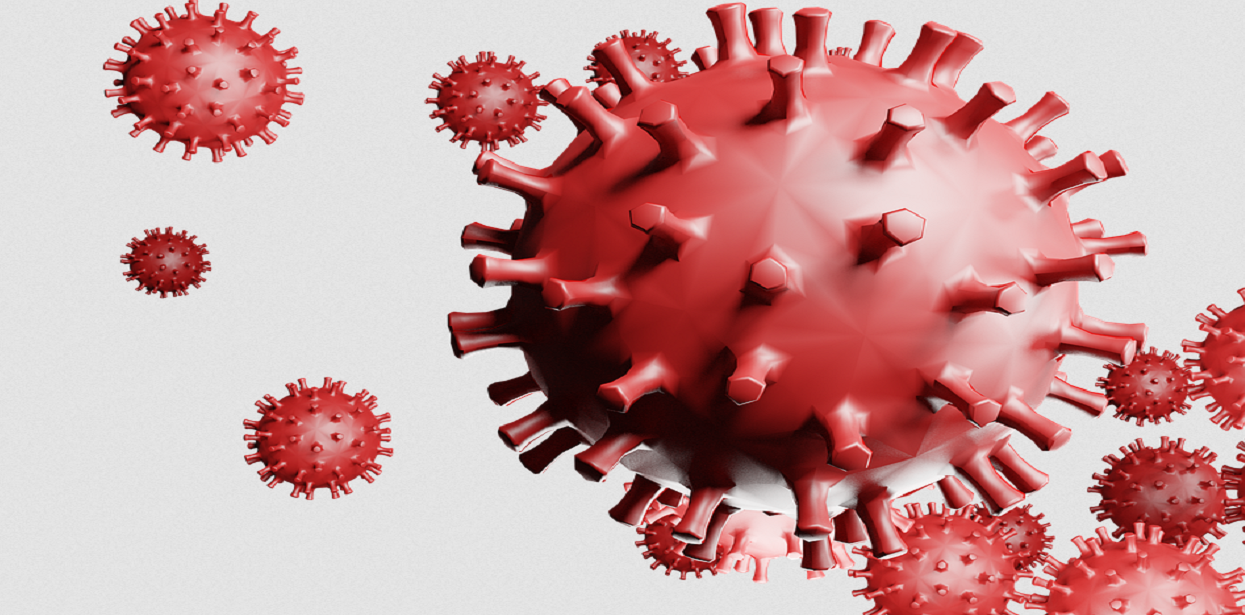



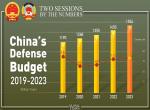

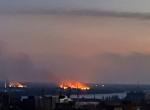
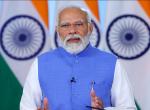
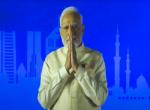
Post new comment